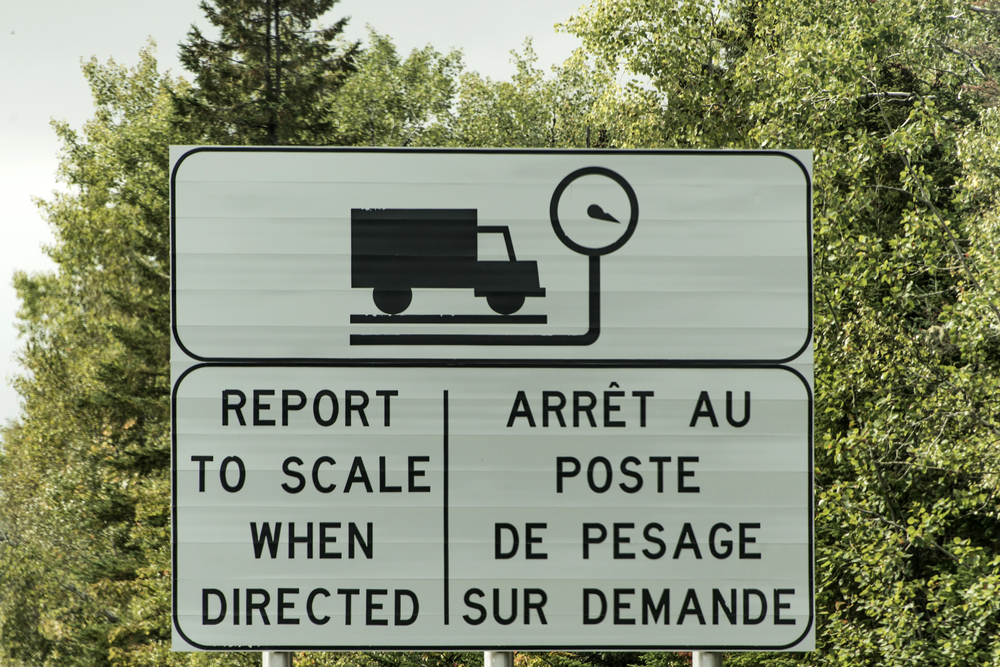Trucks are the backbone of the country; they haul everything from groceries to construction materials across the country every day. But despite being so important to our daily lives, these vehicles are subject to weight regulations to ensure safety and keep the roads we all use in good condition. That’s where weigh stations come in. These stops are to make sure trucks are within legal weight limits so we don’t have accidents and the roads are usable for everyone.
Weigh stations are more than just a stop along the way; they are a part of the trucking profession. Being in compliance with weight restrictions is not a suggestion; avoiding fines and smooth operations is key. Whether you are behind the wheel or managing a fleet, knowing how weigh stations work is crucial to success in trucking.
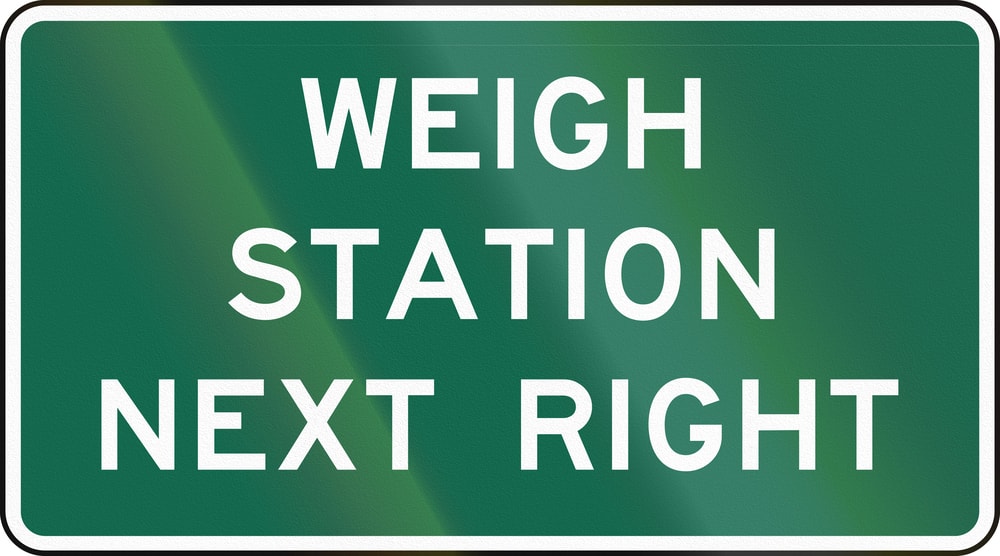
Semi-Truck Weights
Understanding the weight of a semi-truck is important for road safety and legal purposes. Here are the weight ranges for different types of trucks where this comes into play in logistics and compliance.
How much does a semi truck weigh?
-
Empty Weight (Tare Weight): This is the weight of the semi-truck alone, without cargo or fuel. For example:
-
An empty semi-truck weighs around 25,000 pounds on average.
-
Trucks designed for specific purposes like dump trucks, cement trucks, and garbage trucks have extra equipment and have a higher tare weight.
-
Loaded Weight (Fully Loaded): The gross weight of the semi-truck with cargo can be up to 80,000 pounds, the maximum weight allowed on most highways in the US.
Average Weights Across Configurations
-
Semi-Truck Without Trailer (Unladen Weight): Around 25,000 pounds. This can vary depending on the size of the sleeper cab, engine type, and other specs.
-
Fully Loaded Semi-Truck with Trailer (Laden Weight): Maximum legal gross weight: 80,000 pounds. This includes the trailer weight, cargo weight, and truck weight.
Specialized Trucks:
-
Dump Trucks: Heavier since their bodies are reinforced to haul materials like gravel or sand.
-
Cement Trucks: The mixing drum and accessories add a lot of weight.
-
Garbage Trucks: Designed to carry very heavy, compacted loads of trash, these have special weight distributions.
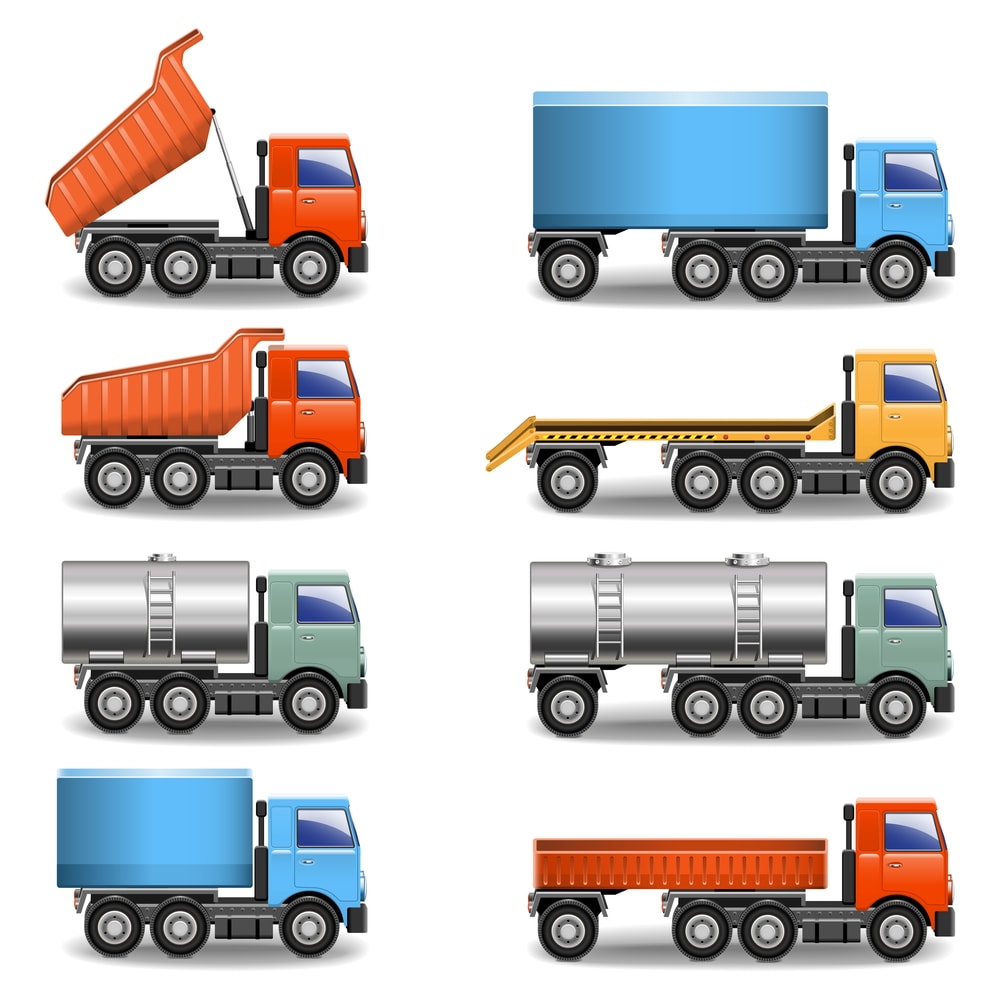
Gross Vehicle Weight Rating (GVWR)
-
GVWR Definition: Gross Vehicle Weight Rating is the maximum legal weight a vehicle can carry as determined by the manufacturer. This includes tare weight, cargo weight, passengers, and other onboard items.
-
Importance in Weight Classification: GVWR ensures trucks are within safe weight limits: but carrying more than what the GVWR recommends is a risk of mechanical failure, longer stopping distances, and potential legal infractions. Although this rating is important, many drivers overlook it and that can be disastrous. Because of these reasons, following the GVWR is key to safe operation.
Types of Trucks and Their Weight Classes
Trucks are classified into three categories based on weight and capacity: light duty, medium duty, and heavy duty. Each has its purpose so let’s break it down.
Light Duty Trucks
Light duty trucks may be small but they are the workhorses of the truck world. These vehicles are commonly seen in and around cities, doing smaller jobs and shorter runs. They excel in urban areas where fuel economy and ease of handling are important. But they can’t carry heavy weights; this limitation doesn’t take away from their ability to do lighter tasks. Examples:
-
Cargo Vans: For last-mile delivery or small business use.
-
Box Trucks: Moving trucks or those used by furniture companies.
Medium Duty Trucks
Medium-duty trucks are a practical balance between light-duty and heavy-duty trucks. They have more power and capacity without the bulk and complexity of the bigger trucks. These trucks are good for heavier jobs and very versatile; they do well for businesses that need reliability without going overboard. Examples:
-
City Buses and School Buses: Since its size and weight, this type is considered medium duty because it was designed to carry passengers.
-
Single Axle Trucks: For regional delivery or minor construction.
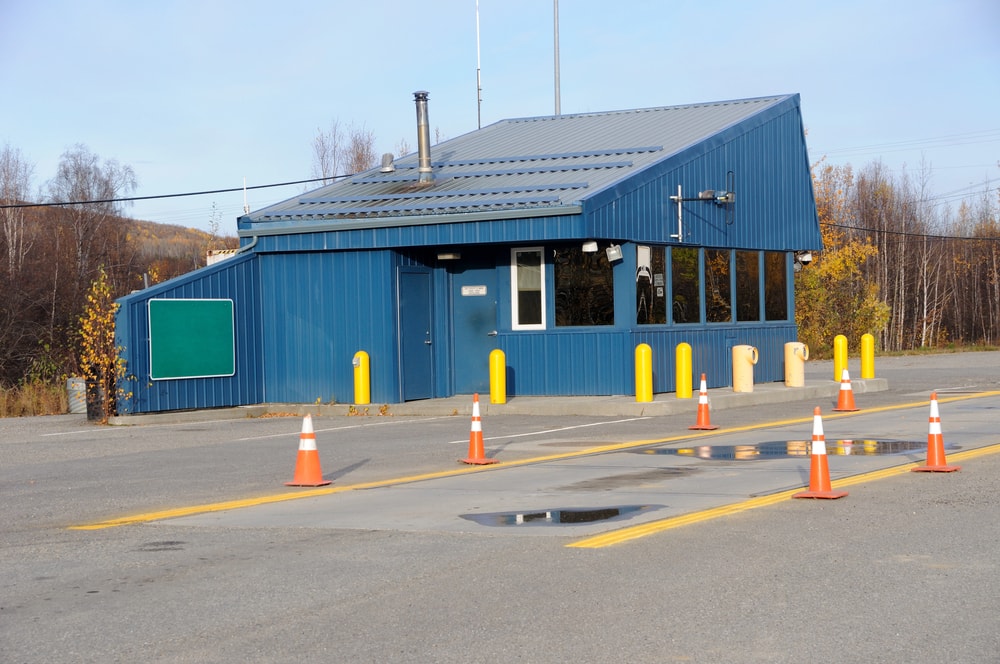
Heavy Duty Trucks
Now we’re talking about the big boys. Heavy-duty trucks (which can be quite big) are designed for the toughest jobs like hauling heavy loads or specialized tasks. These vehicles are built for heavy duty and require power, precision, and often a special license to operate. But that doesn’t stop many from pursuing a career in this field. Examples:
-
Semi Tractor-Trailers (Big Rigs): The classic long haul trucking behemoth.
-
Tandem Axle Trucks: Seen on construction sites carrying heavy materials.
-
Cement Trucks: These carry liquid cement and are designed to keep it in motion so it doesn’t harden.
Trailers and Weight and Performance
Light-duty trucks weigh between 6,000 to 8,000 pounds so they are perfect for zipping around town with smaller loads. Medium-duty trucks like single-axle trucks can carry up to 26,000 pounds and are good for regional work. At the other end, fully loaded semi-trucks can weigh up to 80,000 pounds and can handle the biggest hauling jobs over long distances.
Add a trailer and it’s a whole different story. Light-duty trucks can tow small trailers but can only handle lighter weights. For regional hauls, medium-duty trucks are perfect because they have that perfect balance of power and flexibility. Heavy-duty trucks can haul the heaviest load and must be distributed carefully to be safe and efficient. Weight distribution between the truck and trailer is critical in several situations: for braking and fuel consumption especially where heavy-duty operations need the trucks.

Why Weigh Stations Are Needed
Weigh stations are important to keep our roads safe and in good condition. They make sure trucks don’t exceed maximum weight limits to prevent accidents caused by overloaded vehicles. An overloaded truck takes longer to stop and is more likely to be involved in an accident. Overloaded trucks can also damage roads and bridges which disrupts traffic for everyone by costly repairs.
Weigh-in-motion technology has improved weigh stations to the point that trucks can be weighed while in use, reducing stops. Weigh stations also balance the weight on a truck evenly which is important for safe braking and handling. By monitoring the weights of trucks and finding problems early, weigh stations protect our roads, prevent accidents, and get everyone to their destination safely.
Weight Regulations
Running a trucking company means you need to be familiar with many weight regulations. Federal law limits the maximum weight of an interstate truck to 80,000 pounds for cargo and truck combined. A few vehicles like cement trucks or others hauling special loads for construction projects are exempted but only slightly for the type of load and vehicle design. These variances are tightly controlled to ensure roads are safe and infrastructures are not damaged.
Breaking weight regulations can be a real pain. Overloaded trucks mean expensive fines, delayed delivery schedules, and poor customer relations. On top of that, too much weight can damage equipment, compromise safety on the road, and increase operational costs. For trucking companies especially those hauling heavy loads like construction materials, staying within weight limits isn’t just about avoiding penalties – it’s about protecting their business and reputation.
What Happens at a Weigh Station
Weigh stations ensure that trucks are safe and legal on the road. A truck is checked through a series of processes when it enters a weigh station: Gross Vehicle Weight Rating, tare weight, and laden weight. These are done to make sure the truck is not overweight to the point that it will damage roads or create an unsafe situation. Many weigh stations are equipped with weigh-in-motion systems today which allows trucks to be weighed as they drive over sensors. It makes the process faster and gets the drivers back on the road sooner while getting all the data accurately.
Weight distribution is important before a truck hits the road. When the load is uneven or too heavy the handling, braking, and tires of the truck are affected and can be dangerous to drive. By taking the time to distribute their load evenly and stay within legal limits drivers can avoid fines at weigh stations and ensure their truck performs as expected. At the end of the day weigh stations are more than just rules – they’re about keeping everyone safe on the road.
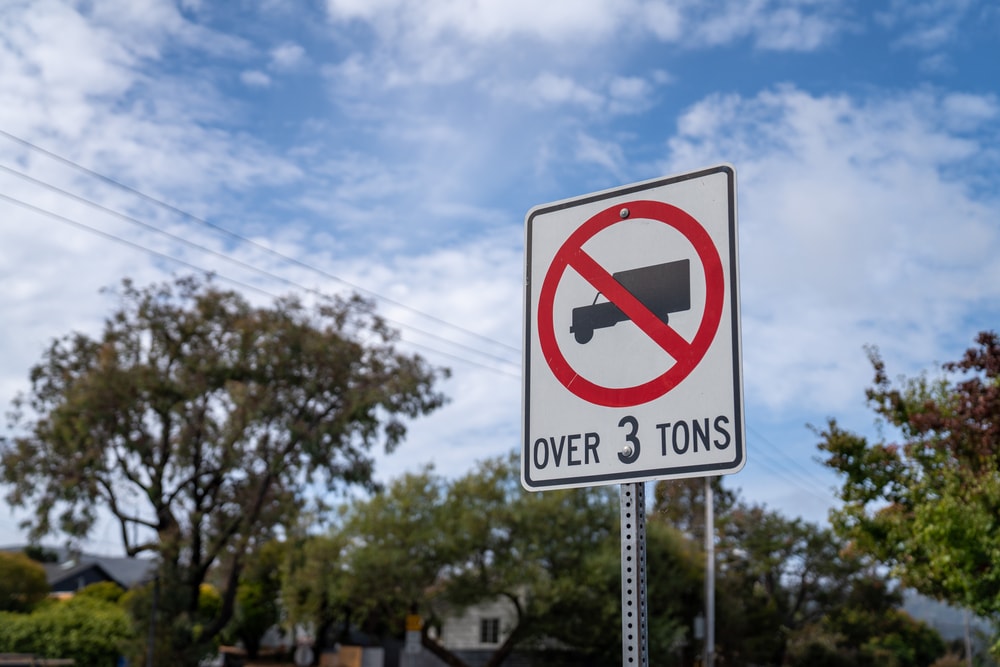
Problems with Overweight Trucks
Overweight trucks pose several problems that can put everyone on the road in danger. That’s why overloading can make a truck difficult to handle and more likely to be involved in an accident. The extra weight means longer stopping distance, reduced maneuverability, and can’t handle sudden stops or sharp turns. That’s why it’s crucial to monitor a truck’s actual weight and gross weight – not just to be compliant but to keep the drivers and other road users safe.
Similarly, overloaded trucks take a big toll on roads and bridges. The extra weight causes cracks, potholes, and structural damage which means expensive repairs and headaches for everyone using that route. For trucking companies overlooking such weight regulations isn’t just dangerous – it’s costly in the long run. Staying within the limit isn’t just about following rules but also about preserving infrastructure that keeps goods moving efficiently.
Weigh stations are the key to keeping everything in check. They keep truck weight within legal limits and promote safer trucking and smoother operations. Compliance is big at ShipEX. We take these weight regulations seriously because we know it’s the right thing to do – for our drivers, for our customers, and for the roads we all use. When you entrust goods to haul with ShipEX you’re dealing with a team that’s committed to safety, efficiency, and getting it right.
Summary
Weigh stations are vital to the trucking industry for safety and efficiency on the road. They keep trucks within their legal weight limits, reduce accidents, protect roads and bridges, and keep everyone legal. By monitoring truck weight at these checkpoints trucking companies can avoid fines and prevent dangerous situations on the road. After all, weigh stations are not just about following rules but about keeping drivers, cargo, and other road users safe so goods can move without delay.
At ShipEX trucking safety is our number one priority. We follow weight regulations because we know how important it is to our drivers and the communities we serve. We do it right at our company because as a trucking company, we’re proud to make sure every load is within legal limits and we can help preserve the infrastructure we all use. At ShipEX when you hire us you know you’re dealing with people who care about your shipment’s safety, compliance, and reliability throughout
